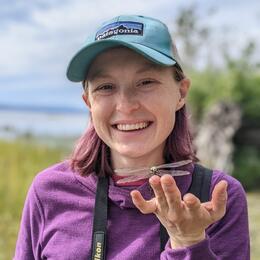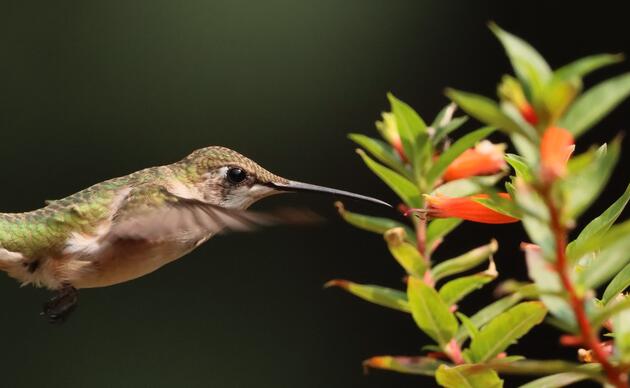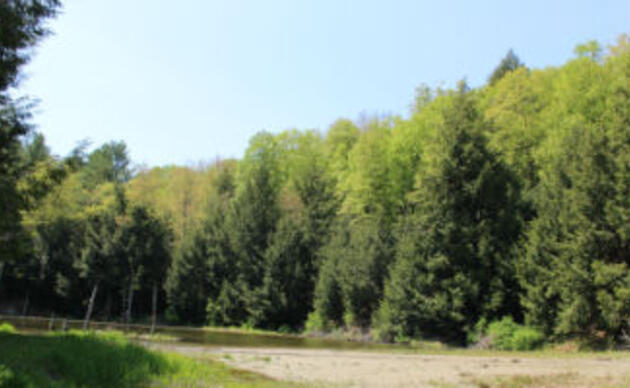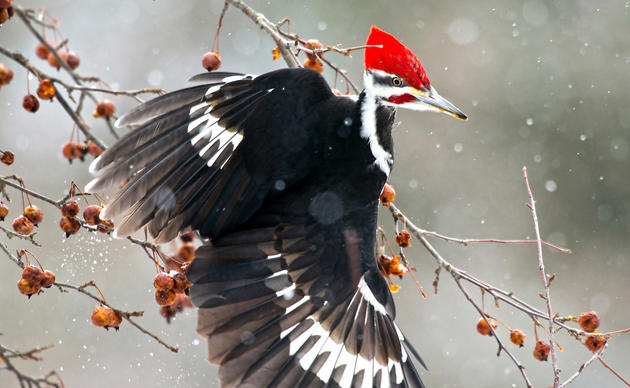It’s March, and here in Vermont that means sugaring season. This month in UnSchool we explored all the steps involved in making maple syrup from the tree to the evaporator.
We started our day by learning about what trees need to make sap in comparison to what people need to turn sap into syrup. Here at Audubon we tap both red maples and sugar maples. Sap is the sugary water that gives energy to the tree. It is produced through photosynthesis by the leaves and is stored in the roots. When days get warm and nights are still cold in late winter and early spring, the sap flows back out to the branches to get ready for flowers and leaves to grow. People use a drill, a tap, and a bucket to collect the sap and boil it in an evaporator to concentrate it into syrup.
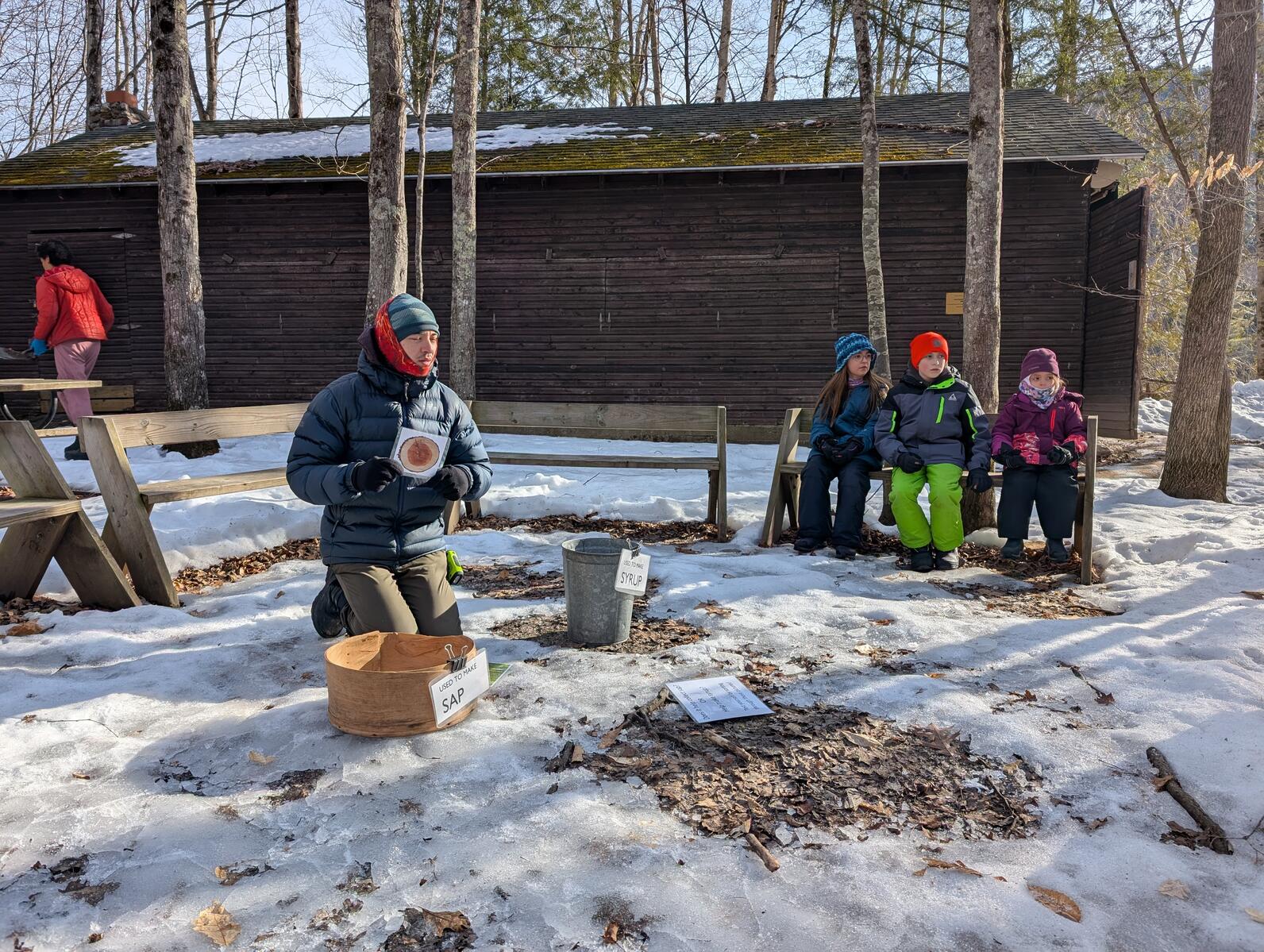
After snack we began our own sap to syrup journey. We started by tapping trees. A tree must be 10 inches in diameter or 31 inches in circumference to be large enough to be tapped. Any tree smaller than that is still too young and needs all the sap it can get to grow taller and stronger. We used a drill to make a hole 1 ½ inches into the tree. This gets through the bark to the sapwood underneath. Next, we put the spile with hook attached to the hole and hammered it in. Sometimes, on warm days the sap will start flowing immediately. Last week during our class it was too cold in the morning for the sap to flow. We would have to wait until it warmed up. We added a bucket and a lid. We would come back to it later.
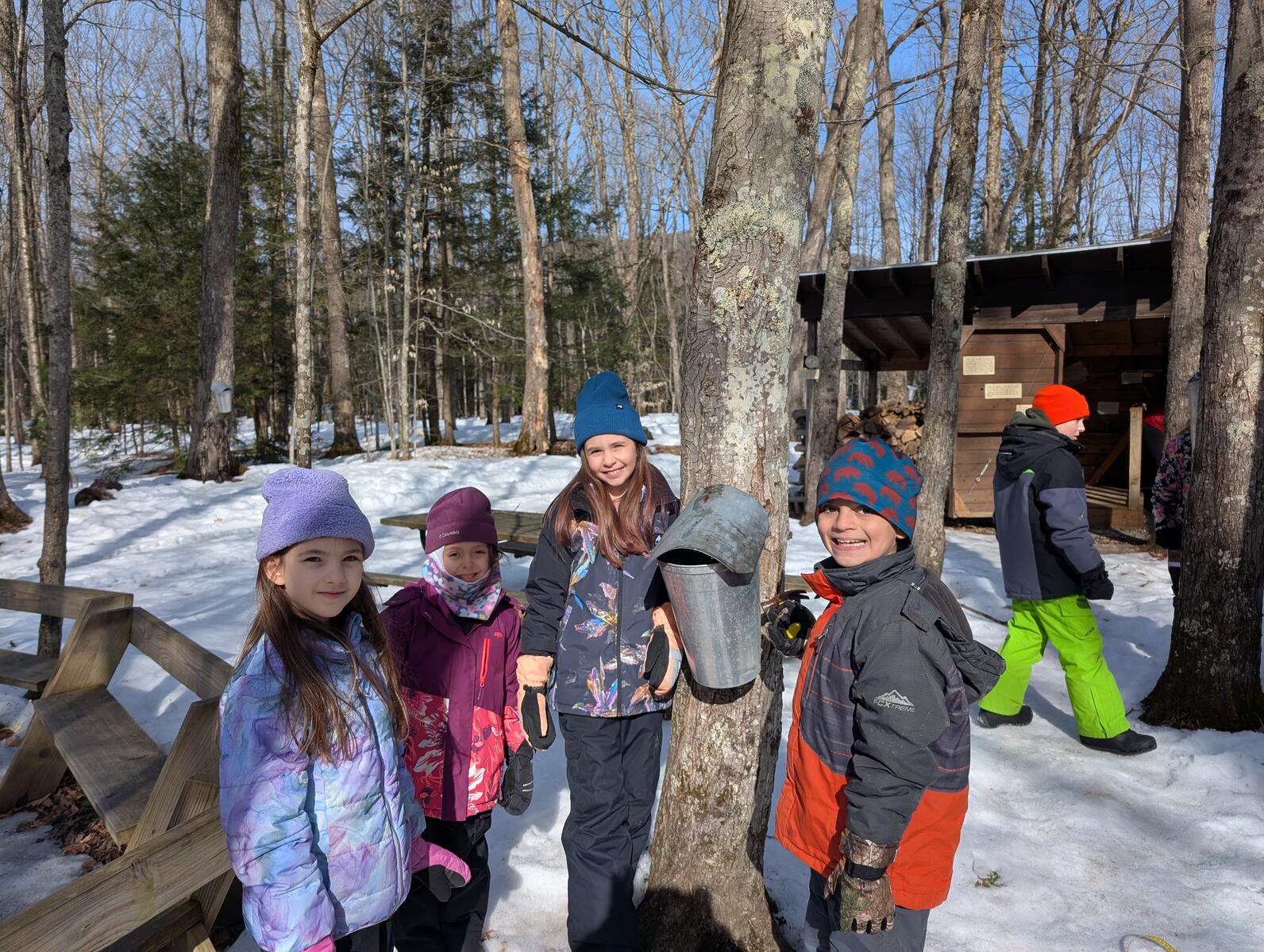
Next, we learned about collecting sap. We searched for gallon jugs in the woods to answer the question: how many gallons of sap does it take to make one gallon of syrup? We collected the gallon jugs and counted them up. There were 40! It takes 40 gallons of sap to make one gallon of syrup. This is why we need the lid; it keeps snow and rain out of the sap. More water in the sap means it will take more time to boil down to syrup.
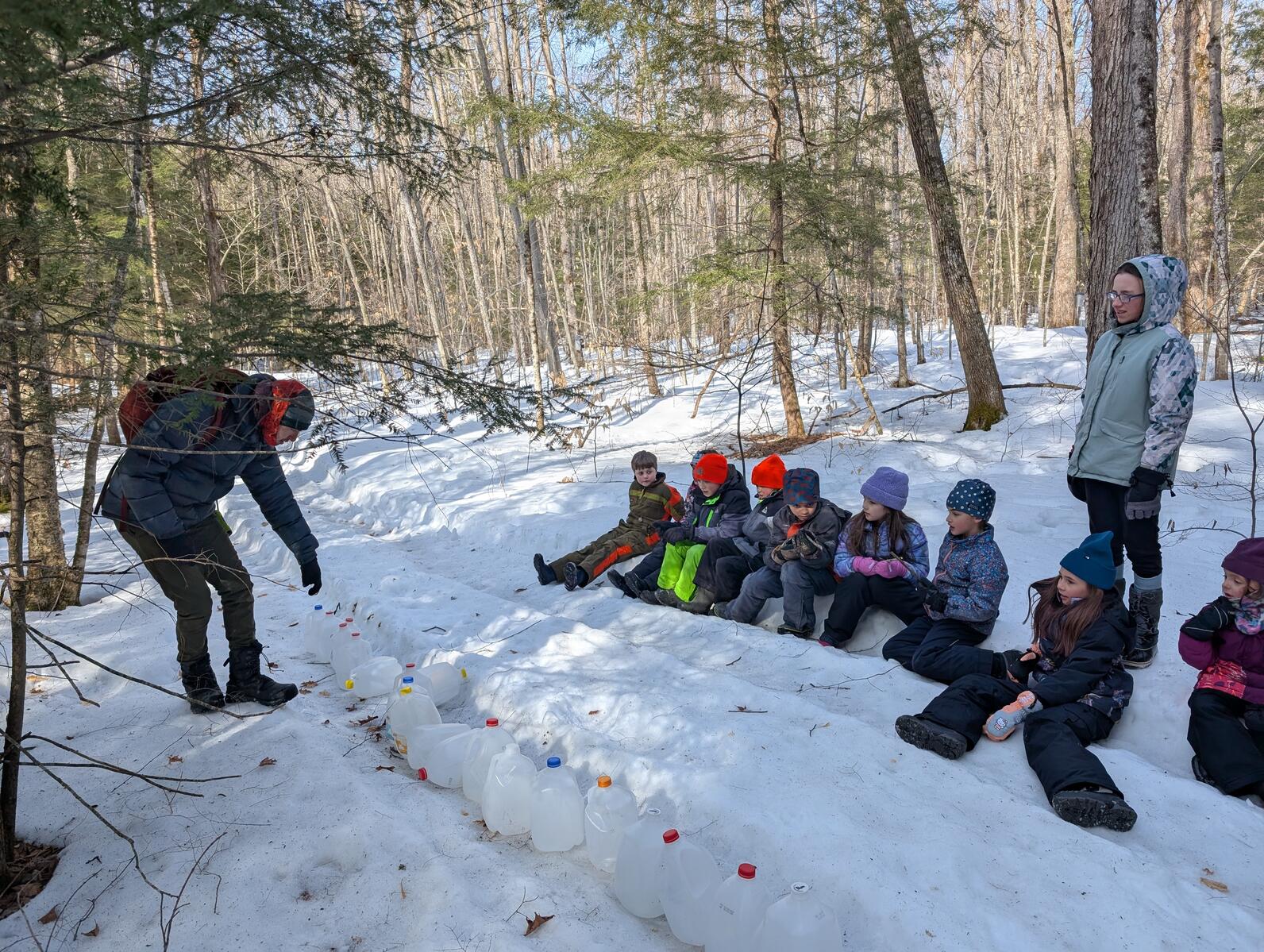
That’s the next step of the process: boiling. We went down to the sugarhouse where the sugarmaker was boiling. He showed us the arch where we build the fire, the evaporator where the sap flows as it boils into syrup. Once the syrup is thick enough with a high enough sugar content it gets poured out, strained, and bottled. The best part of visiting the sugarhouse however, was certainly the sweet smell of the steam.
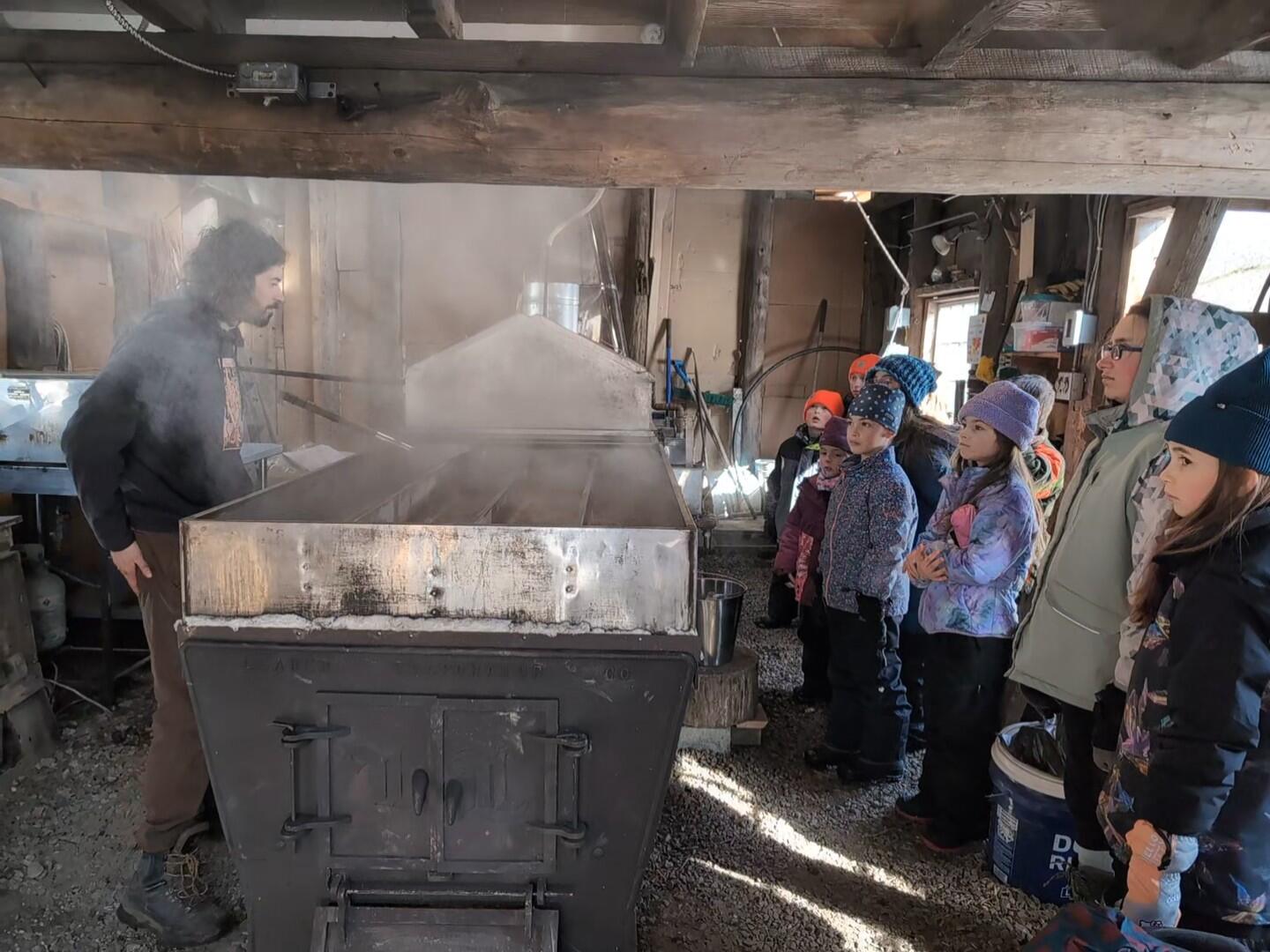
Now that we had seen the whole process it was time to collect sap from the buckets. Most of the sap had been collected by our sugaring team the day before but we were still able to gather about 15 gallons of sap. We figured out that if we were to boil down all that sap we would get about 1/3 of a gallon of syrup.

After lunch we learned about the importance of bird friendly maple, through a scavenger hunt for the birds of the sugarbush. Back in the fall, we learned that birds need forests with a diversity in tree species and age as well as standing dead trees. Diverent types of birds live in different areas in the forest. The Black-throated Blue Warbler likes young trees. The Black-throated Green Warbler likes short evergreen trees like hemlocks. Scarlet Tanagers live high up in the tallest trees. Ovenbirds hop around on the forest floor and build their nests in piles of downed branches and trees. Yellow-bellied Sapsuckers need standing dead trees, or snags to drill into and collect insects or build nests.
To round out our day we did a taste test of different grades of syrup. Syrup has different tastes and color based on the time of the season and the time that the sap has sat before being boiled. We tasted golden with delicate taste, amber rich and dark strong.
After our taste test we checked back on the trees that we had tapped earlier and were shocked to see that all three were about one third filled!

